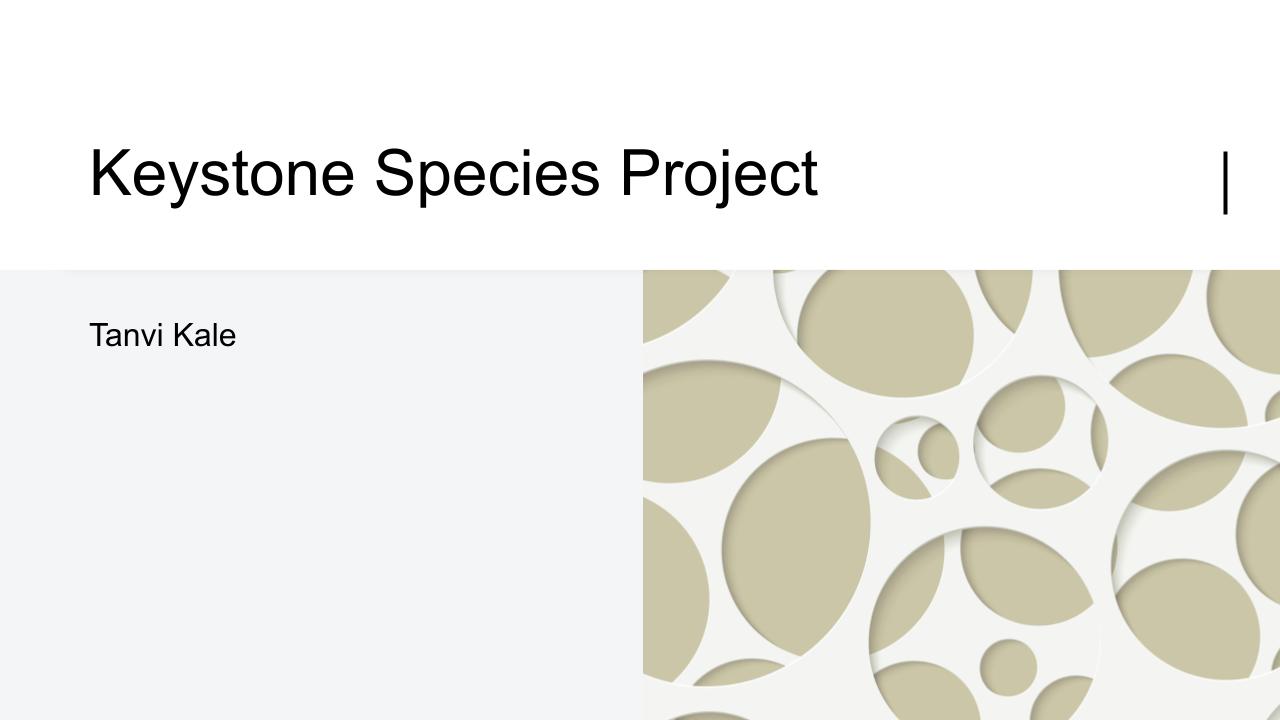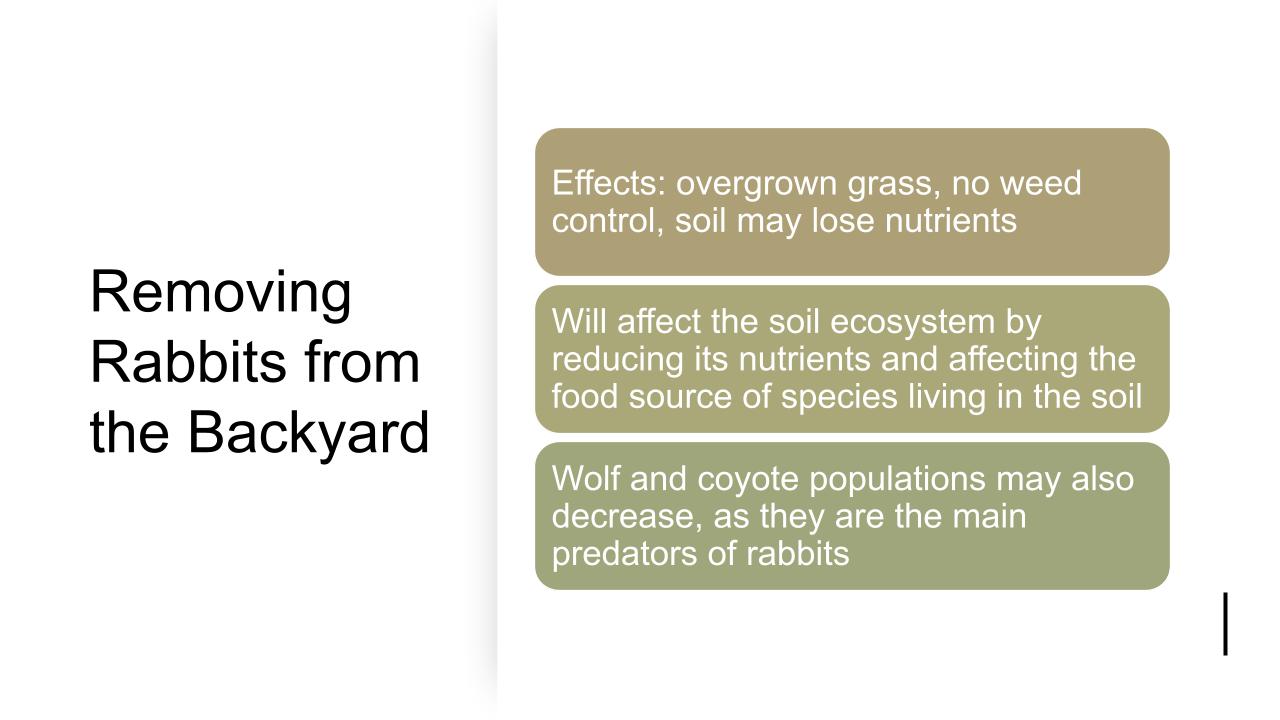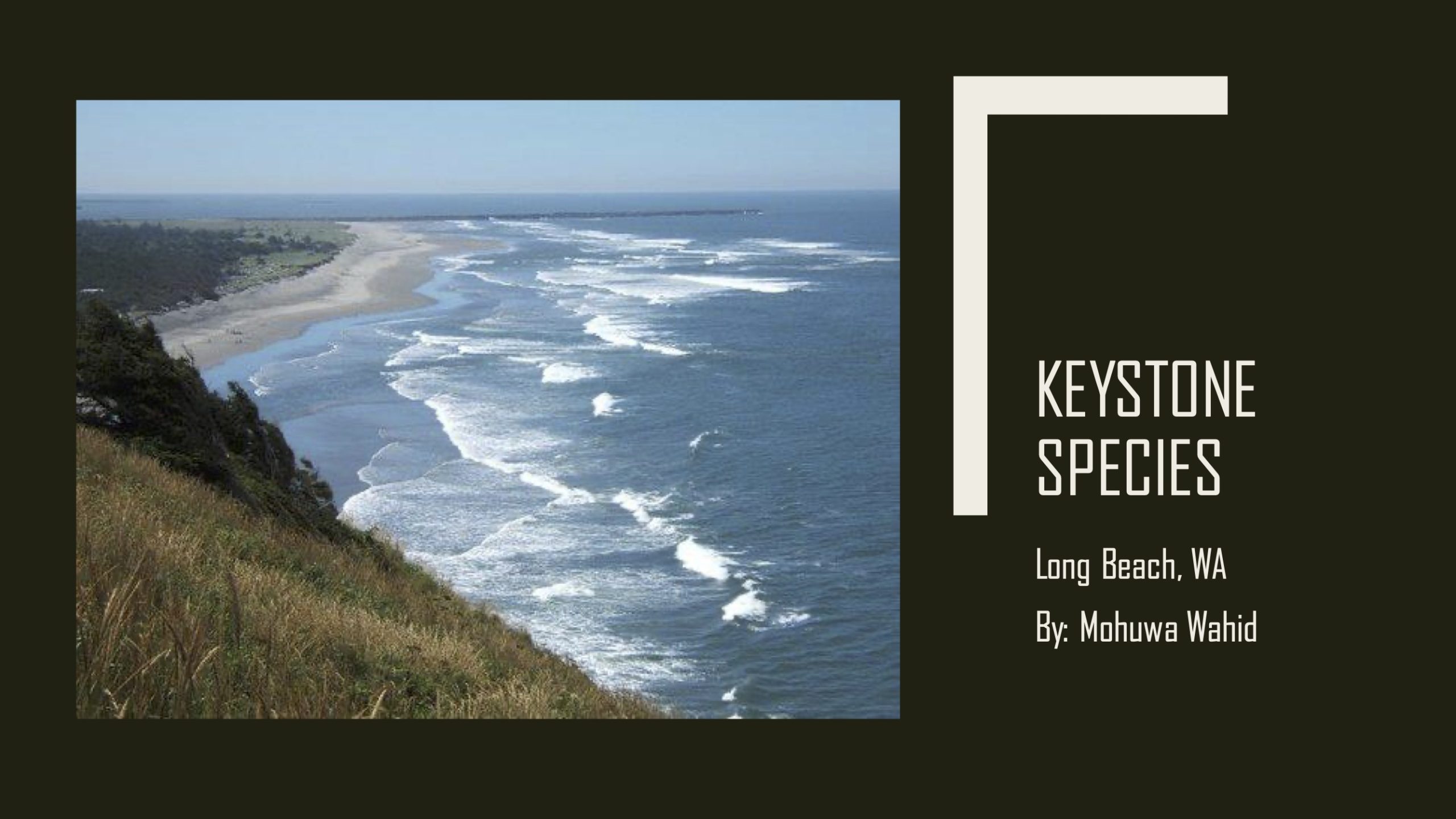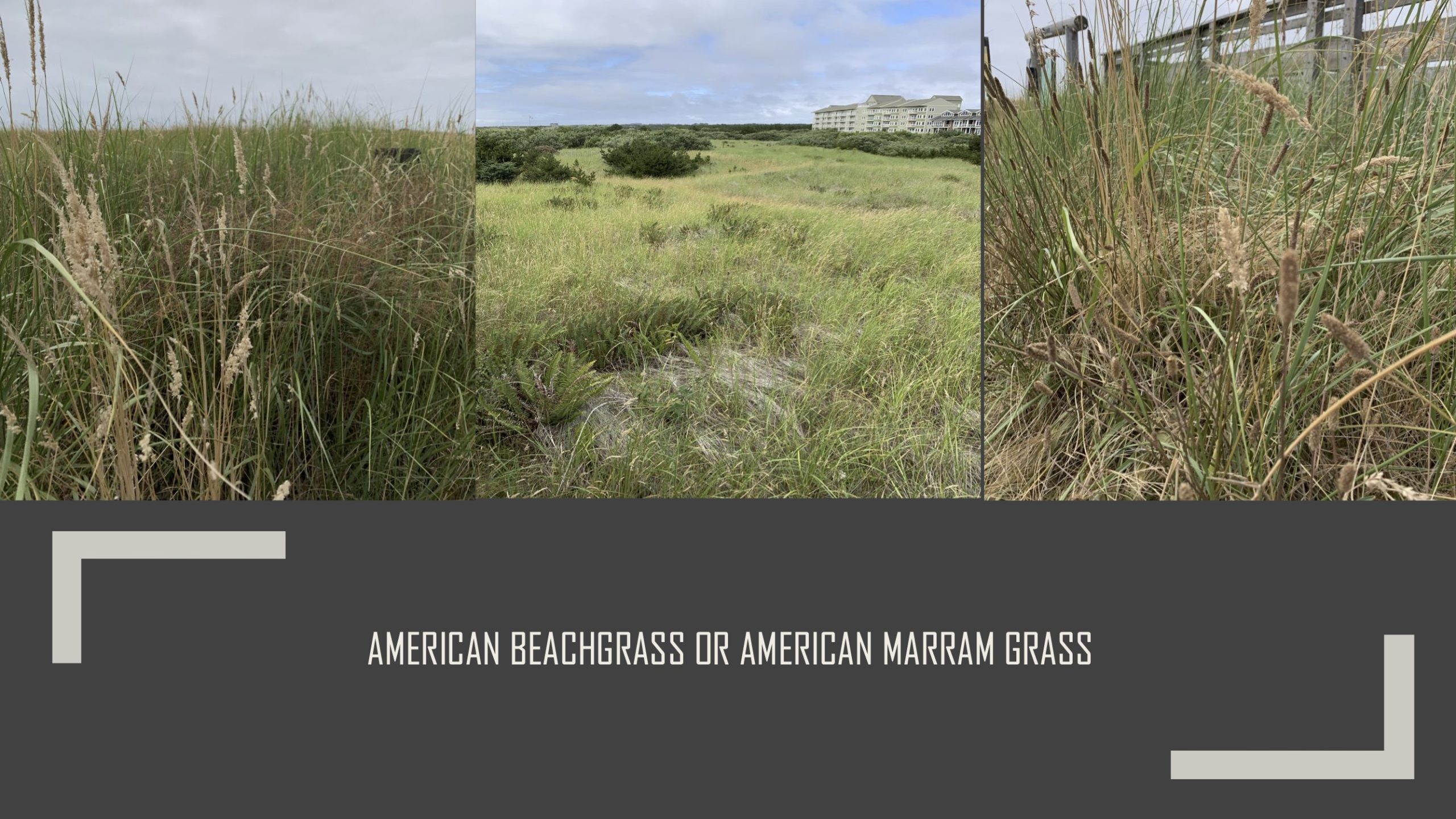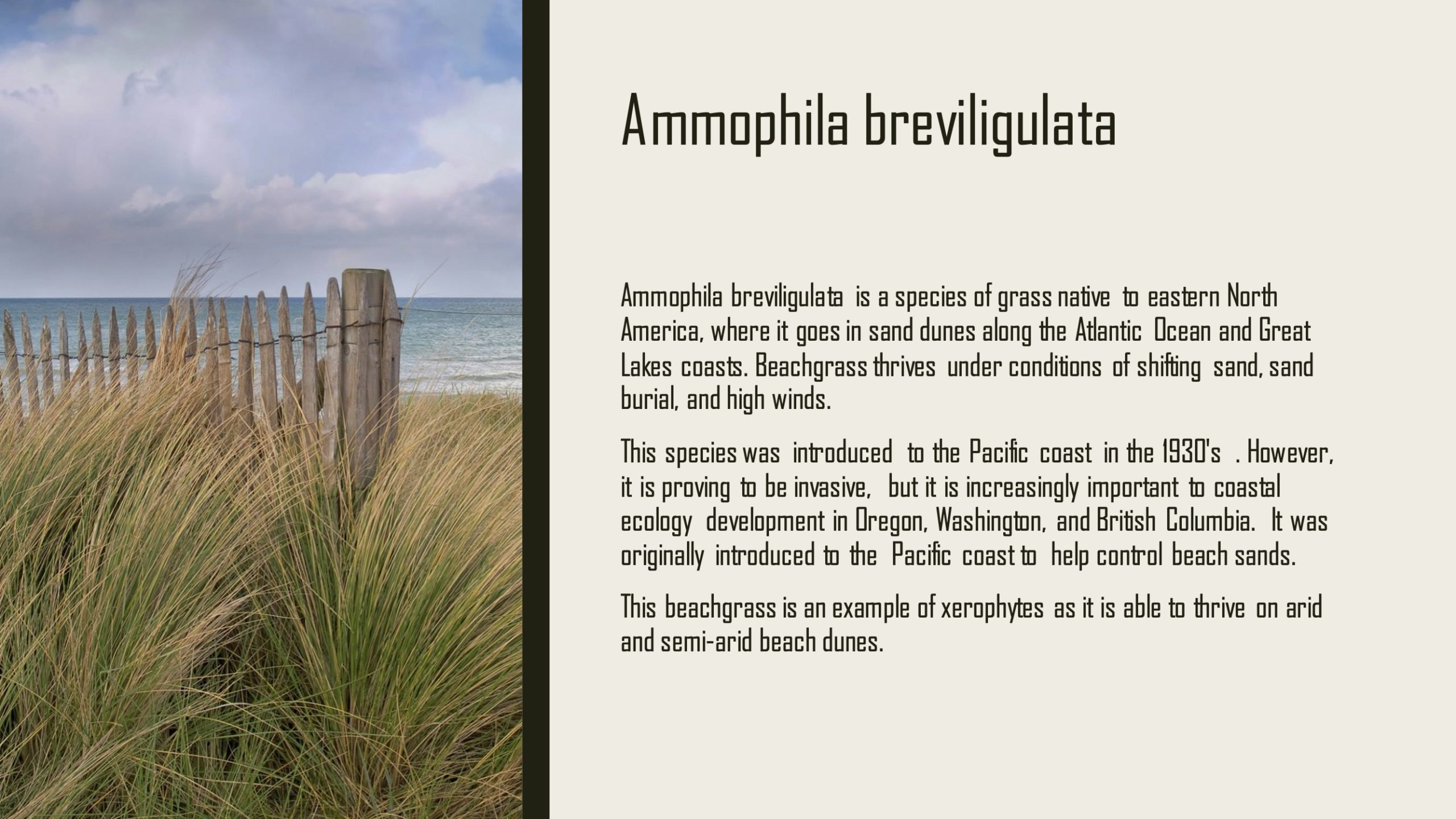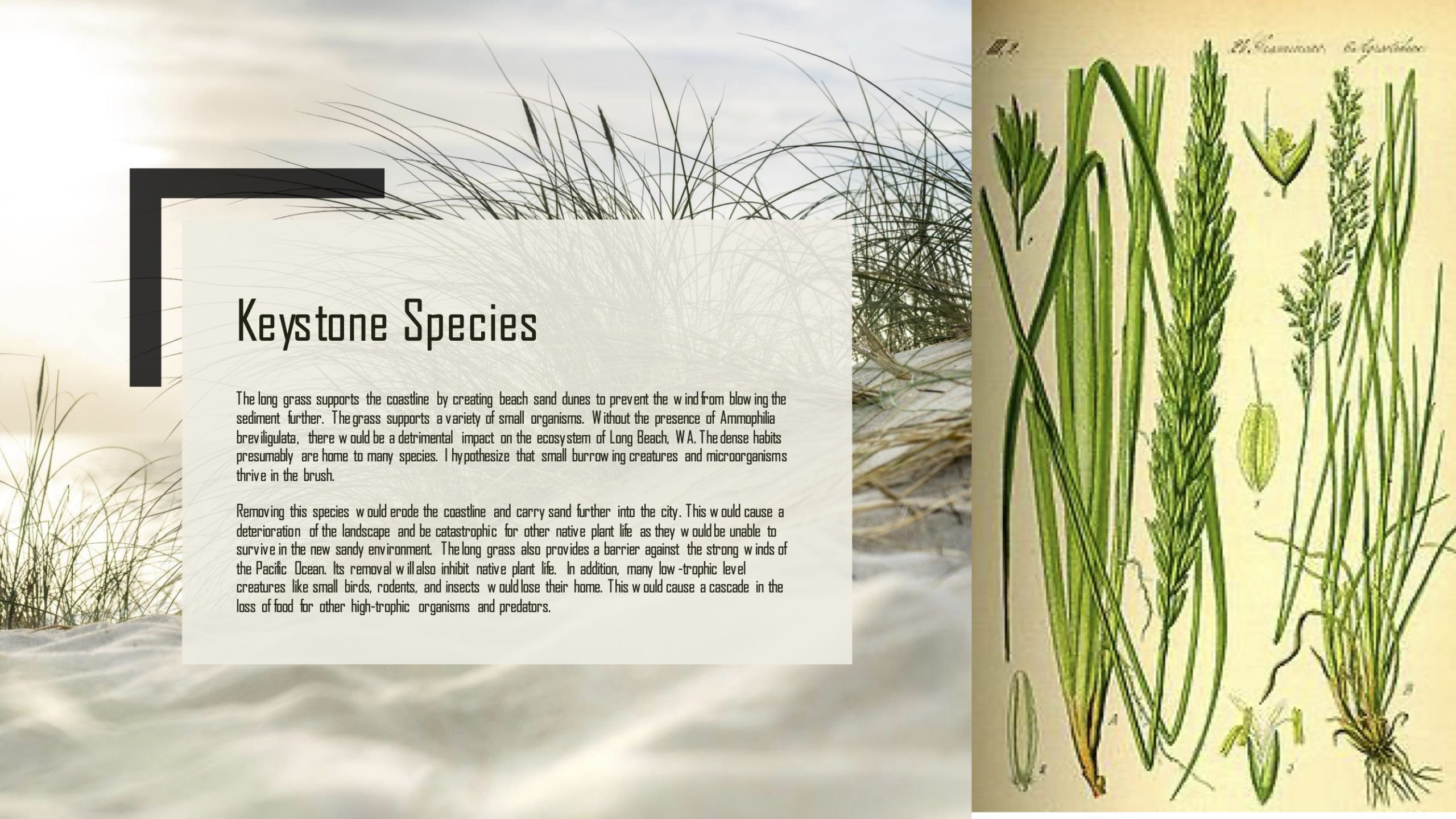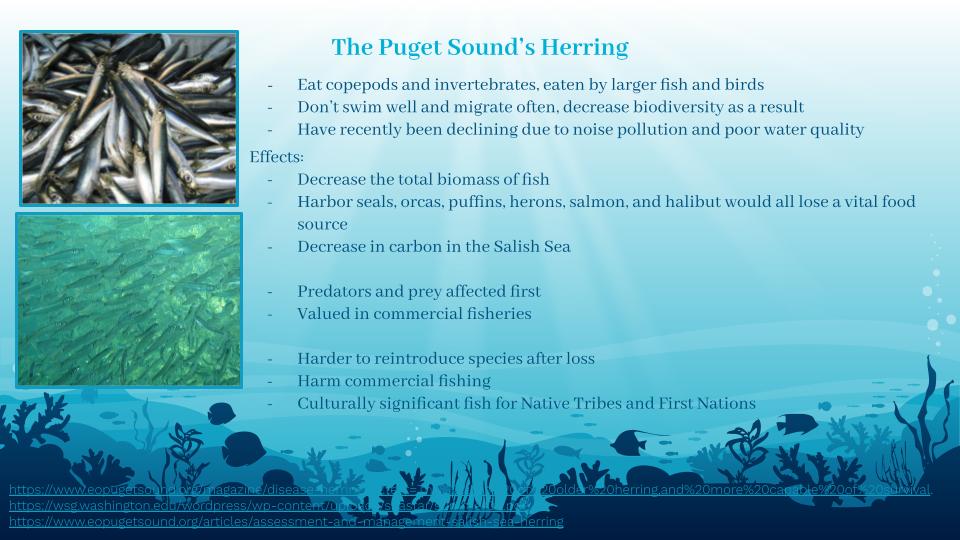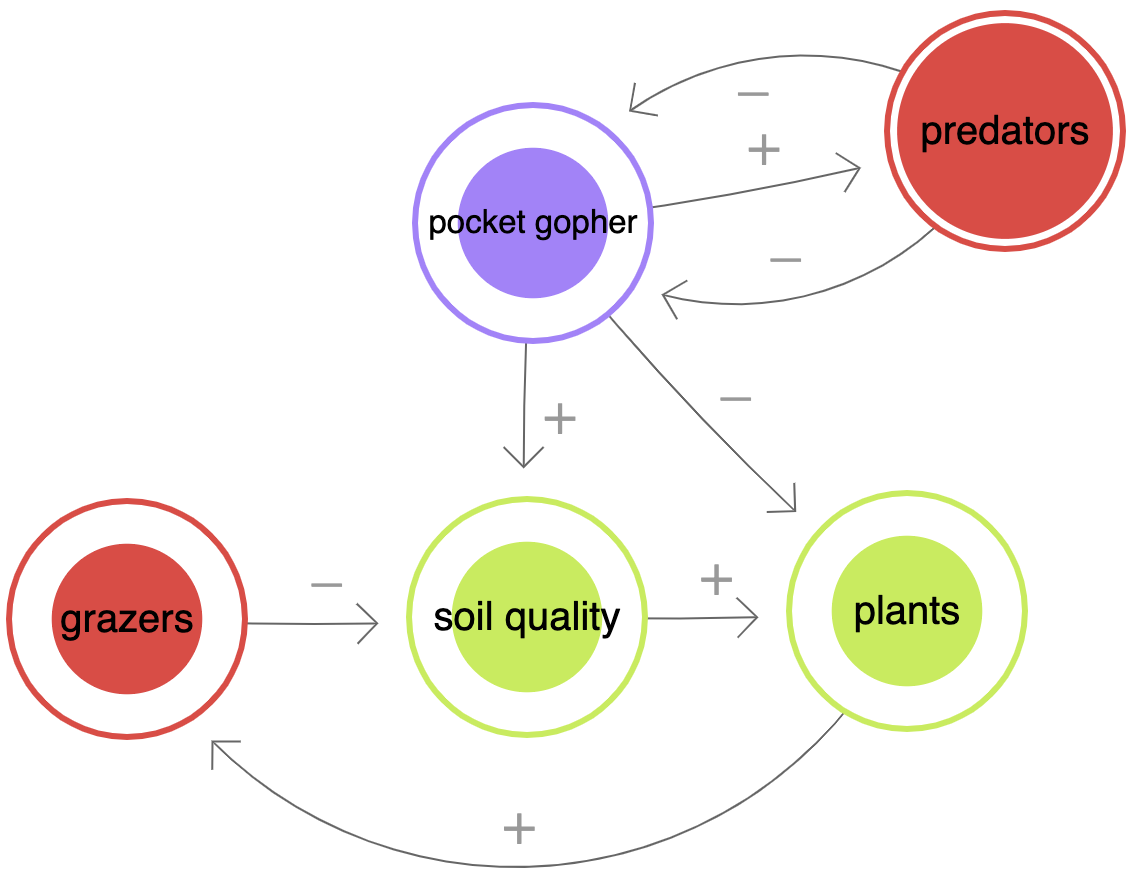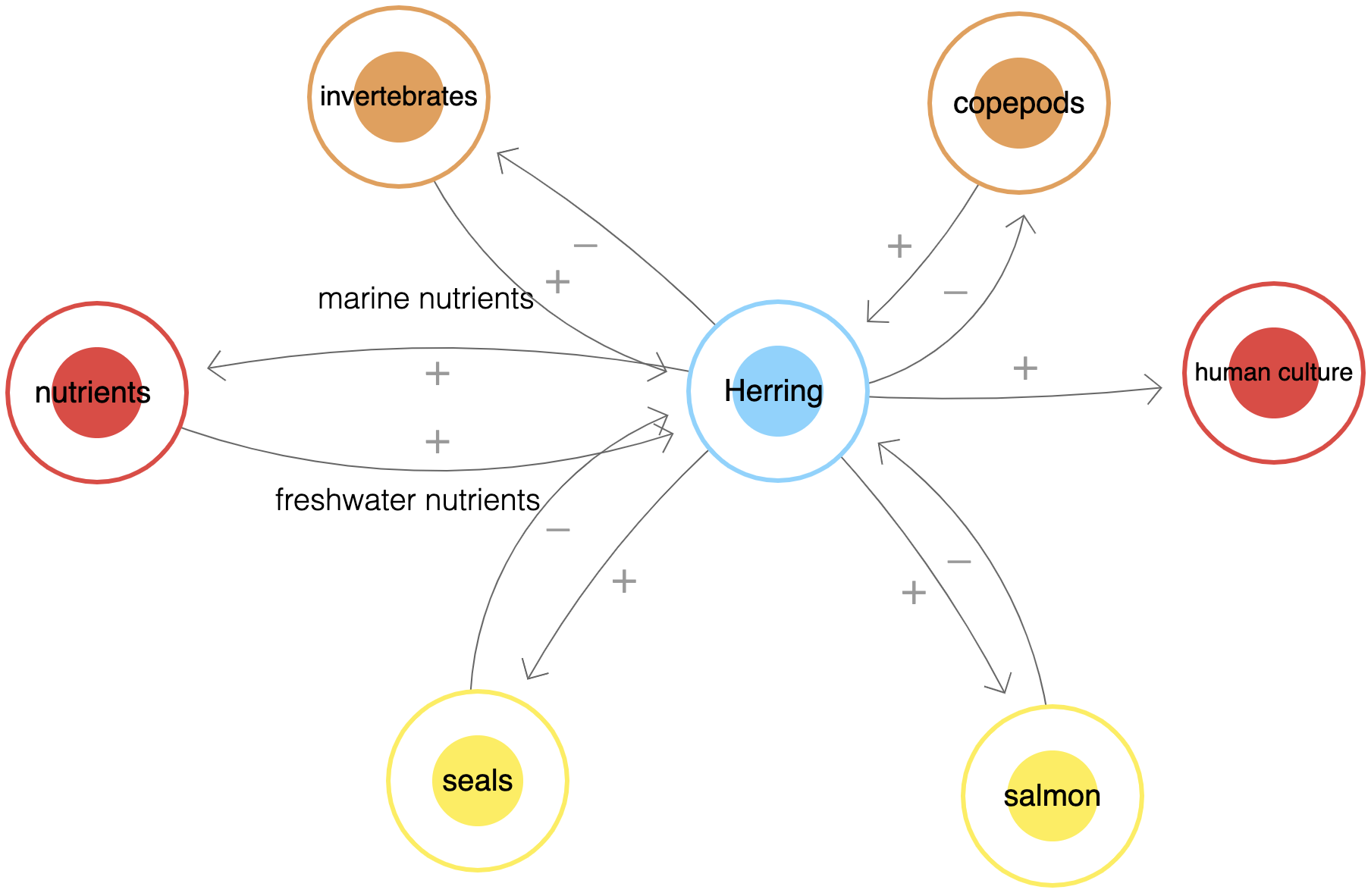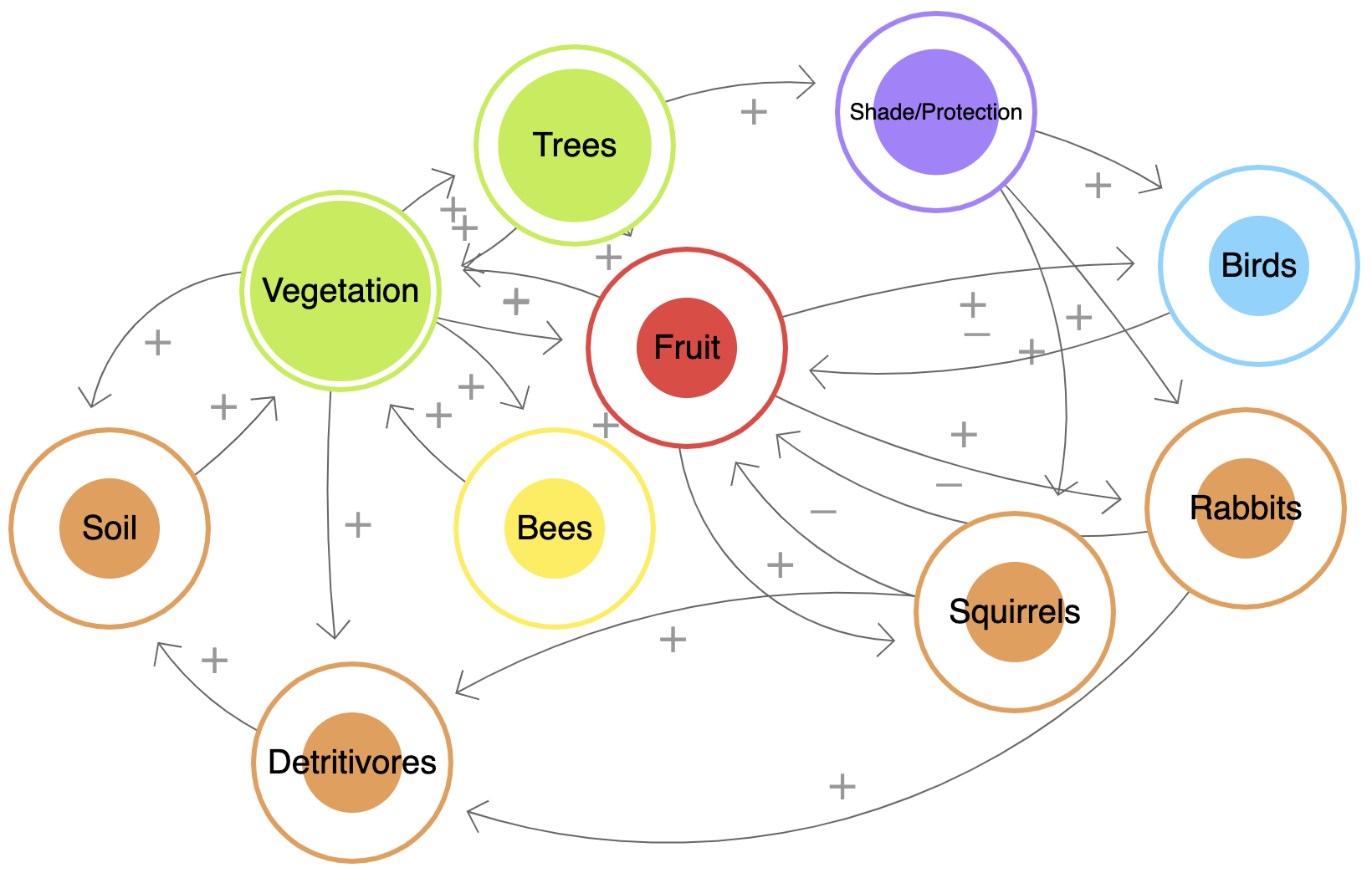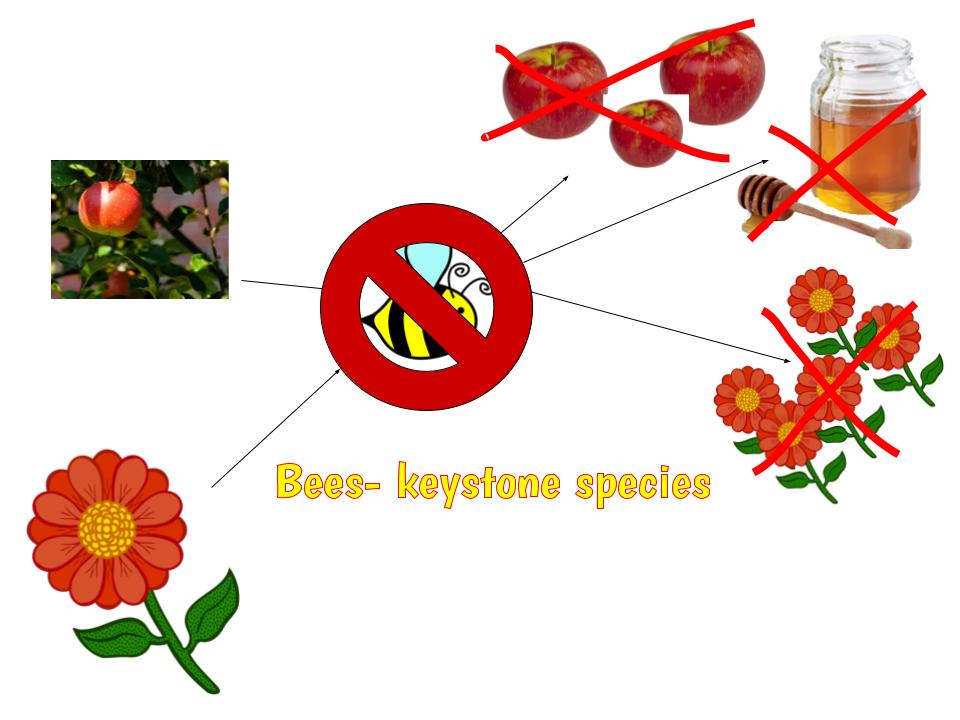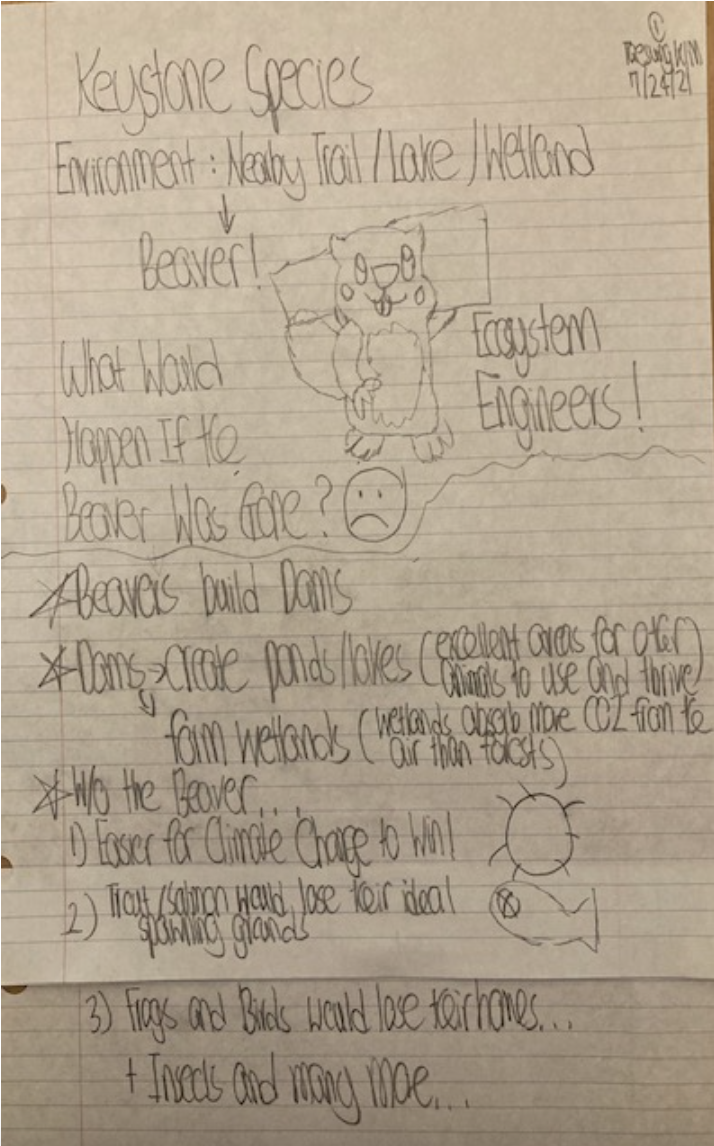Keystone Species Project
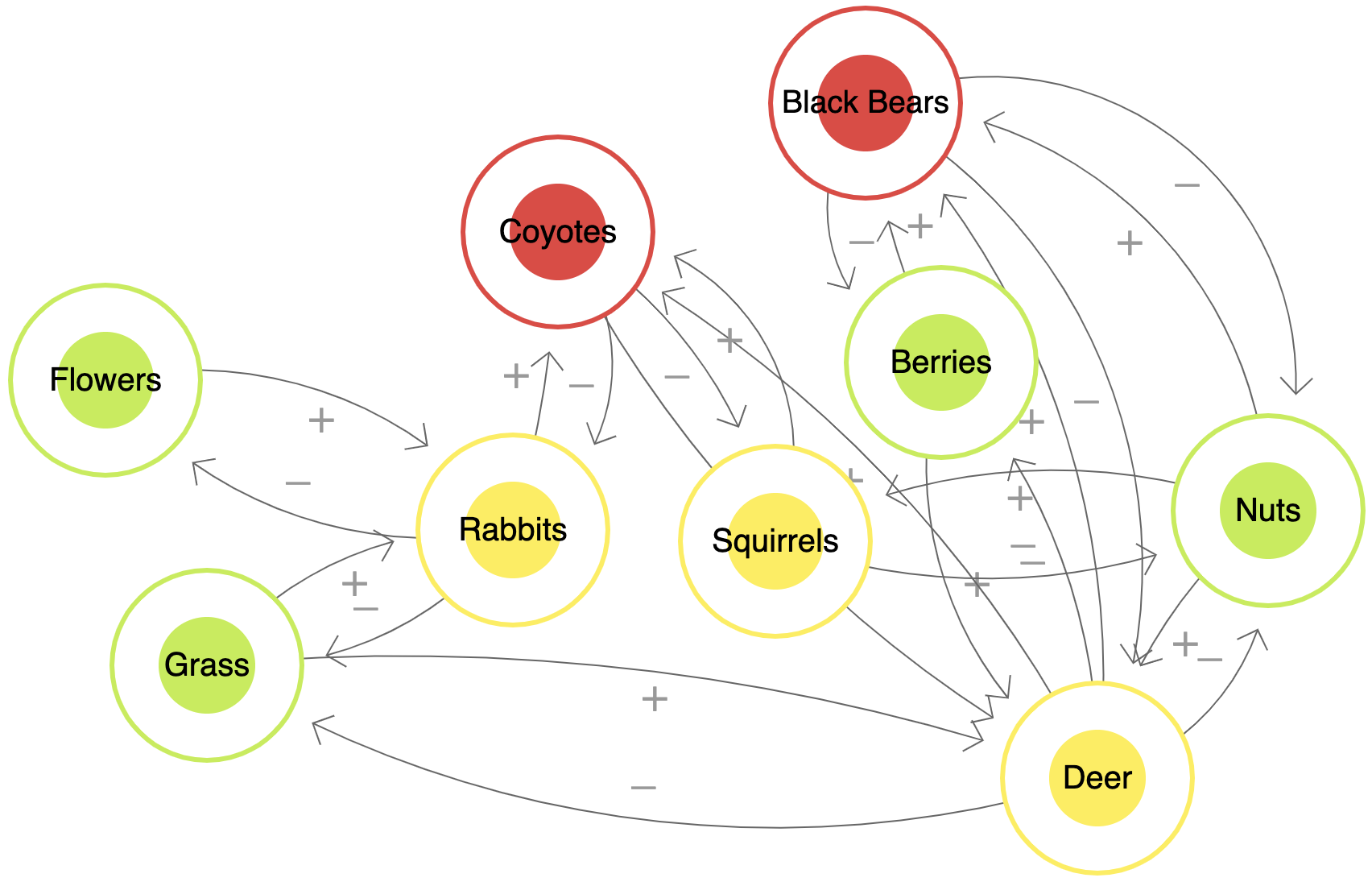
Scroll through the page to view examples of student work from the Keystone Species activity completed within SEE's Environmental Systems in the Outdoors Research Experience (ESORE). At the bottom of the page, there is a link for educators to access resources to try this activity with their students!
Claire Y.
Environment: tree area/mini forest behind my house
Species: coyotes
Loopy model (food web): https://bit.ly/3J35ghs
If coyotes were removed (by hunting for example), mainly biotic factors and a few abiotic factors would be affected. They eat rabbits, squirrels, and deer, so those populations would increase without coyotes keeping them in check. This would result in many plants being depleted from the growing herbivore population. Black bears can keep deer in check but they are omnivores and eat a lot of fruits and nuts too, so black bears would have to shift their diet to mainly deer if there are less berries and nuts. But overall there would still be too much strain on the vegetation which can lead to decreased groundcover and increased erosion, which means more soil, dirt, etc. would end up getting washed into storm drains and waterways. This can increase pollution in waterways, disrupting aquatic ecosystems by killing fish, causing algal blooms, and more.
Amara Maw
Here is the link to my Loopy model: https://bit.ly/3z5rMBD. I’ve also inserted an image of its setup below.
The keystone species I chose were the pocket gophers. They are a food source for many other animals that live around my town, such as owls, foxes, coyotes, and snakes. Their constant digging also results in vertical cycling of soil, which helps the soil become porous and provide increased aeration for plants. If they were removed from my local ecosystem, the most prominent effect would be that its predators would lose a major source of their food, and would likely turn to other sources of food or diminish in population. Another effect of removing the gophers would be that the soil quality would diminish, and plants may not have as great of an environment to live in. In my town, many of the plants do not seem to be that healthy already, so removing the gophers would leave them struggling even more to meet their nutrient needs. An indirect effect that may happen is that people may begin to
Amanda Zheng
Keystone Species: Herring
- Eat small marine invertebrates
- Get eaten by salmon, seabirds, seals, larger predators
- Big part of big fish diets
- Special bc no other ani is in the same position
- Without them, food cycle is unstable
- They serve as a link
- They transfer nutrients from sea and river
- River herring as migrate out of river, they take nutrients
- When come back to spawn, they return nutrients
- Important to human culture
- Native American tradition and way of life
- Celebrations of herring returning
Sources: The Puzzle of Puget Sound Herring
Nikolette Warycha
Elizabeth Leung, Redmond High School
Reefs are well-known to be essential to exotic marine life, and coral reefs are a dying environment which may no longer exist in the near future. As the name suggests, coral reefs are made of coral. Coral provides homes for certain marine organisms (fish, turtles, etc.), food, as well as protection from the harsh sea and predators.
First of all, consider the environment. Reefs are natural barriers to the strong ocean currents, creating a calm ocean area which are necessary for certain organisms. Remove the coral reef, and the harsh waves will overtake the still water, leaving many marine life without a home or protection.
Many also depend on the coral themselves from food. Aside from harboring many food sources for predators, other organisms such as fish and crabs feed on the coral itself. For example, the parrot fish.
Removing the coral from the larger ecosystem of a reef would be absolutely devastating to both the environment and those who depend on it. Take this short story of a fisherman for example:
Bob has been a licensed fisherman near the reef for a long time. For his entire life, he had lived near the beach. His parents were also fishermen, and he had learned the craft from them at a long age.
He could always recall the beauty of the bay area which he fished in. All of his favorite childhood memories were about the vibrance of the area and the colorful wildlife which never ceased to amaze him.
However, as time passed, he realized that many of the colorful corals were turning white and gray. It was a sign of the reef dying.
The effects weren’t exactly instantaneous, but he began to realize that his catch was not nearly as big or as diverse as before. It also became rarer for him to see turtles, sharks, and all the sorts. And as a consequence, the money which he made from the fish started to decrease. As he was old, it wouldn’t affect him too much… but he couldn’t help but worry about the future generations of fishermen.
FOR EDUCATORS
Interested in learning more about this activity and trying it out with your students? Check out resources for this activity HERE.


